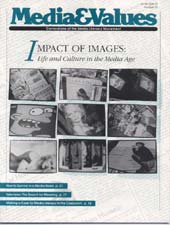'America's Wish Book' Sells Dreams
|
This article originally appeared in Issue# 57
|
Printed and dispersed widely in the latter decades of the nineteenth century, advertisements provided a vehicle by which urban life could be presented to the countryside and urban industrial values promulgated among rural folks.
A notable example of this was the massive distribution of the Sears-Roebuck Catalog among American farmers from the 1890s on. For many in the countryside, the advertisements in the catalog provided the first glipse of the city. Upon the crowded, densely printed pages of the catalog -- dubbed "America's wish book" --rural people saw configurations which contrasted sharply with the open spaces with which they were familiar. Here urban density was depicted not as a condition of poverty and squalor, but as a site of abundance. Against rural traditions of scarcity and self-sufficiency, advertising -- like the Sears catalog -- projected urban consumption as a route toward cornucopian existence.
On each page, people confronted a quantity and variety of material goods that was previously unimaginable. Advertising was a kind of urban map, suggesting a world of streets paved with gold.
— Stuart Ewen, Advertising and the Development of Consumer Society



